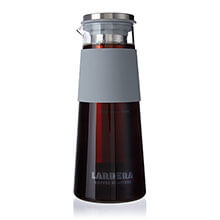Everything You Should Know About Iced Coffee
June 07, 2023

But why is that?
For starters, iced coffee isn’t too different from its hot counterpart. The brewing method used to yield your desired results will dictate flavor. Here is everything you need to know about iced coffee, whether you’re ordering at your local coffee shop or making your own batch at home.
Types of Iced Coffee
The iced coffee space has undergone massive change and innovation over the past few years, with new recipes and pre-made coffee products popping up in coffee shops and supermarkets. However, instead of listing all of the creative directions baristas have taken cold coffee, this area of the coffee space can be broken up into two categories: espresso drinks and cold brews.Espresso Drinks
On a fundamental level, many popular iced coffee drinks are nearly the same as classic hot beverages.For example, iced lattes and iced americanos typically start with a double shot of espresso. Rather than steaming milk or heating water, milks and water are poured directly over the espresso and ice to finish the drinks. If you’re not interested in either milk or extra water, espresso shots can be enjoyed on their own over ice.
These espresso-based drinks are also great vehicles for flavorings and sweeteners. Chocolate mochas, cinnamon, caramel, and spices are just some potential directions iced coffees can go in, as well as some brighter flavors like citrus in a classic Mazagran. Here is a breakdown of common espresso-based iced coffee recipes at home:
Iced Americano
A double shot of espresso over ice and water.Iced Latte
A double shot of espresso over ice and dairy or plant-based milks.Iced Espresso
A double shot of espresso poured over ice.Cold Brews
Making cold brew might require less assembly than espresso-based drinks but also more time.Cold brew is often crafted without the use of heat, meaning the brewing process is gentler in nature. In order to get the desired results you are looking for, you’ll need to leave your cold brew in the fridge overnight and let time do the work. The lack of heat in this process also helps yield lower amounts of acidity in your coffee, meanwhile preserving your coffee’s natural sweetness.
While espresso calls for very finely ground coffee, cold brew is made using coarser grounds. These grounds create less surface area during the brewing process, meaning water cannot extract coffee’s flavor as easily and requires more time to get an even extraction. Use a grinder with multiple settings so you can enjoy both hot an cold coffee all year round!

Typically, a 1:2 coffee to water ratio is also used for brewing. Freshly ground coffee is always encouraged to maximize the flavor of your cold brew. Once you mix your grounds and room temperature water in a designated vessel (i.e., cold brew pitcher, place your brew in the fridge to steep until ready. As previously mentioned, this takes time with 12 hours being the minimum for excellent cold brew.
After a 12-hour or more brewing period, it’s time to filter your coffee. Use a fine-mesh strainer to separate the grounds from the coffee and you’re left with a potent concentrate. You can now dilute this flavorful liquid with water or milk to your liking and enjoy delicious iced coffee at home. Store your homemade cold brew in the fridge for about 5-7 days.
But let’s say you don’t have 12 hours to wait, and instead, you want your cold brew in a pinch. In order to do so, you’d need to apply heat to extract coffee’s flavor both quickly and effectively, which requires the right equipment. Our Lardera Cold Brew Pitcher is made from heat-resistant glass, which allows coffee grounds to bloom in flavor but rapidly reduce in temperature in a matter of minutes.
Here is a breakdown of common cold brew varieties:
Cold Brew
Coarse coffee grounds and room temperature water left to steep for a minimum of 12 hours. Your cold brew's potency and flavor can be adjusted to create various concentrates.Nitro Cold Brew
A recent innovation in the iced coffee space, nitro cold brew has a higher ratio of coffee in its recipe. The brew is also infused with nitrogen to produce microbubbles that give nitro its creamy texture and opaque appearance. In many ways, this coffee style looks similar to a draught beer. While there are products on the market that can infuse cold brew with nitrogen at home, this recipe is more commonly found in speciality coffee shops.Coffee is an ever-evolving space with new innovations always around the corner. Iced coffee is a space within the industry that offers professional and home baristas alike plenty of creativity to brew something special. What recipe you decide to brew comes down to personal preference, but proper technique, coffee grounds, and freshness will always deliver optimal results in the end.
